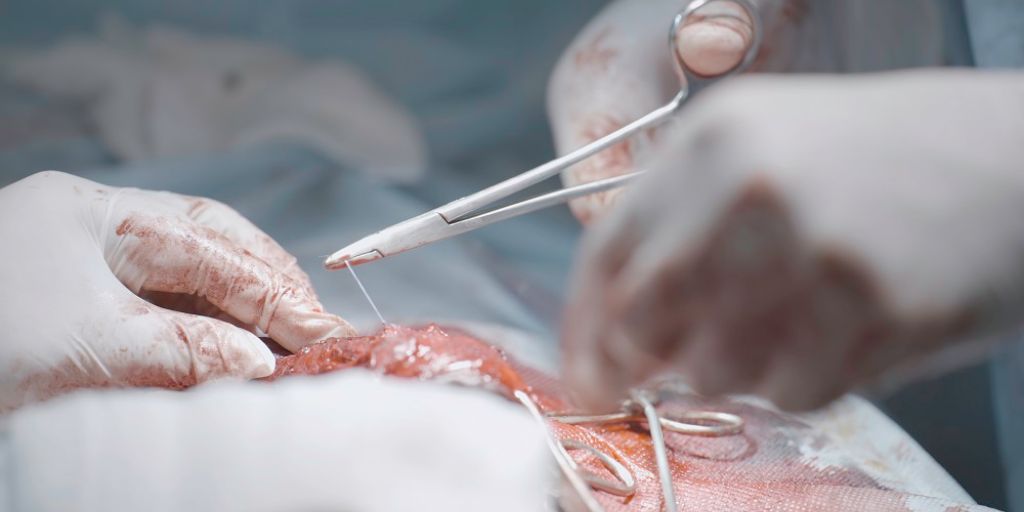
Surgical sutures play a vital role in closing wounds and repairing tissues, as their choice can influence the outcome of patient care. When considering these critical medical supplies, you must weigh several key aspects. Understanding these elements helps medical professionals balance performance and safety in clinical practice.
Material Composition
Suture material, which can comprise natural or synthetic fibers, is at the heart of their performance. Natural fibers such as silk are known for their secure handling and strong knots, though they may provoke more tissue reactions. In contrast, synthetic fibers like polypropylene or nylon tend to cause less irritation and provide reliable consistency in absorption and strength. When you buy surgical sutures online, these differences in the material are critical in guiding a choice that best suits the patient’s healing needs and biological response.
Absorbable Versus Non-Absorbable Sutures
Another crucial step is deciding between absorbable and non-absorbable sutures. Absorbable sutures gradually dissolve in the body and disappear after serving their purpose. This quality suits delicate procedures, particularly for internal tissues where removal would be difficult or impractical. On the other hand, non-absorbable sutures remain intact, and practitioners generally use them in areas where external support is required or where a long-lasting hold is needed internally. The decision between these options depends on the surgical situation and the desired outcome for the tissue repair.
Size and Diameter
The dimensions of a suture, including its size and diameter, directly affect the healing process. A larger diameter may offer more strength but at the cost of causing increased tissue trauma. Conversely, a finer suture minimizes damage to surrounding tissues while lacking the tensile strength required for specific procedures. This trade-off between reducing tissue reaction and maintaining sufficient support is critical when selecting the appropriate suture for a surgical task.
Knot Security and Breaking Strength
A suture must hold tissue together securely during the healing phase. Two key properties that contribute to this are the strength of the knot and the overall tensile strength of the material. A robust tensile strength means the suture will hold up under movement forces without reopening the wound. At the same time, the security of the knot is essential to prevent it from loosening or coming undone. These attributes are vital in keeping the wound closed during recovery, and any compromise in either area could lead to complications.
Handling and Flexibility
The physical handling of sutures is another aspect that can affect a surgical procedure. You should buy surgical sutures online that offer the right balance between flexibility and strength. Rigid materials may complicate the placement and tying process, thus extending the time needed for the procedure. Many surgeons prefer sutures that provide a natural feel and adequate pliability while retaining enough strength to resist breakage. This combination helps to maintain control during surgery and contributes to a smoother operative process without distractions.
Cost Considerations
Budget constraints are always a concern in the medical field. While the lure of lower-cost options may be substantial, it is essential to weigh price against quality. A suture that appears inexpensive may not offer the performance or durability needed in critical applications. Investing in higher-quality sutures can reduce the risk of complications, positively affecting patient outcomes and the overall cost of care. The upfront expense often balances with the potential reduction in postoperative issues, which makes cost a factor beyond mere pricing.
Packaging and Sterilization
Proper packaging and sterilization are essential in maintaining the function of sutures and preventing infections. Packaging protects the sutures from environmental contaminants while allowing quick access during a procedure. Sterilization practices must meet established standards, which are crucial in keeping the sutures free from harmful organisms. Medical staff must pay close attention to these details to ensure that surgical sutures arrive in perfect condition and are ready for immediate use when required.
Environmental Impact
As the conversation around environmental concerns grows, the ecological footprint of medical supplies comes under scrutiny. Some suture options include biodegradable materials that help to reduce waste and environmental harm. For healthcare facilities aiming to lower their ecological impact, selecting products that offer biodegradable options can be an essential part of the decision-making process. Balancing the demands of medical performance with a commitment to environmental care can guide institutions toward choices that reflect both clinical and ecological responsibility.
Supplier Reputation and Reliability
The reputation of a supplier can influence the overall quality of the surgical sutures purchased. Well-established brands often have a history of investing in research and development, which results in proven and innovative products. A reputable supplier typically guarantees that the products meet strict standards and deliver them on time. Building a relationship with a trusted supplier also helps ensure healthcare professionals receive consistently reliable products, which is crucial when patient care is at stake.
Conclusion
Sutures are a common choice for addressing surgical wounds, and many factors influence their selection. Material composition, absorption characteristics, size, and mechanical properties are critical in decision-making. In addition, cost, packaging, sterilization, environmental impact, and supplier reputation further guide the selection process. By understanding these aspects, clinicians can make informed choices that align with the specific demands of each surgical procedure. This careful evaluation helps secure better surgery outcomes and supports improved patient satisfaction.












